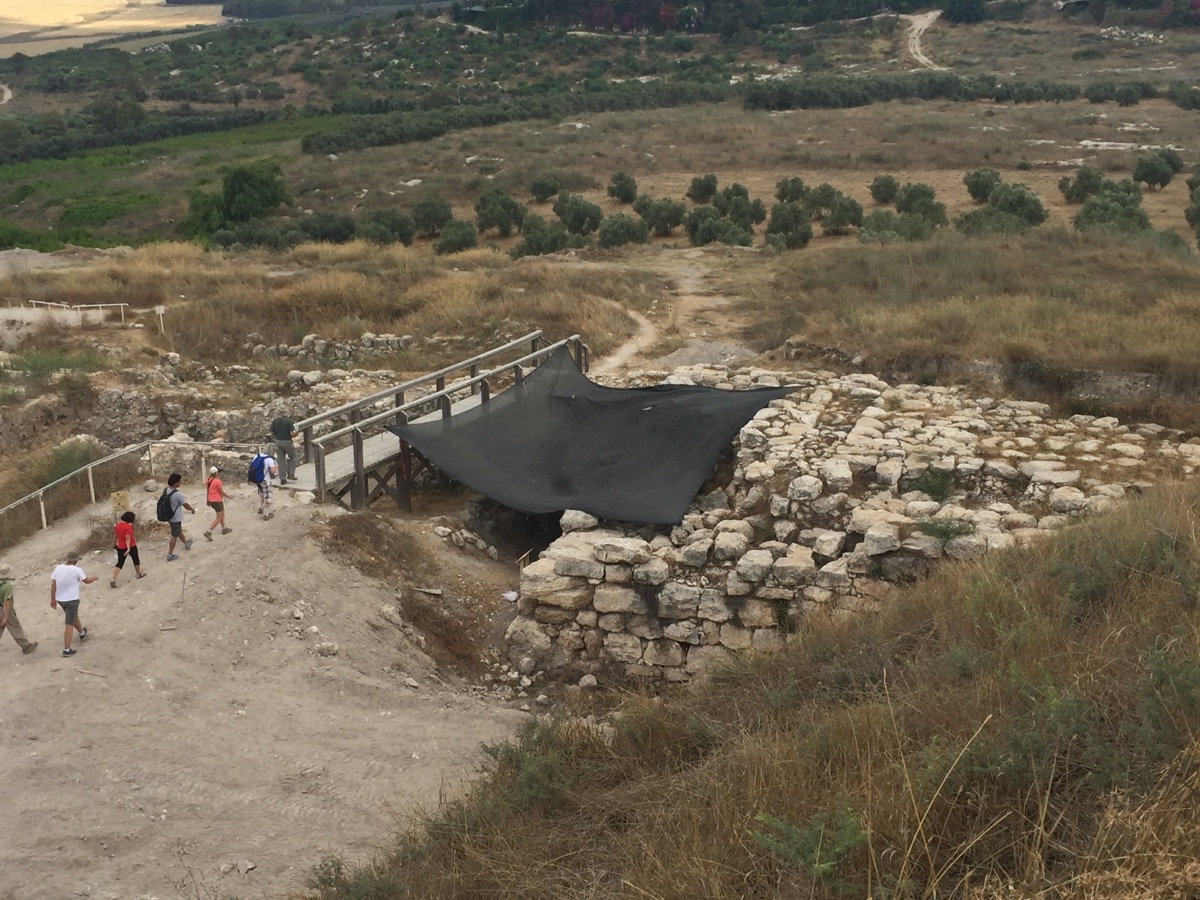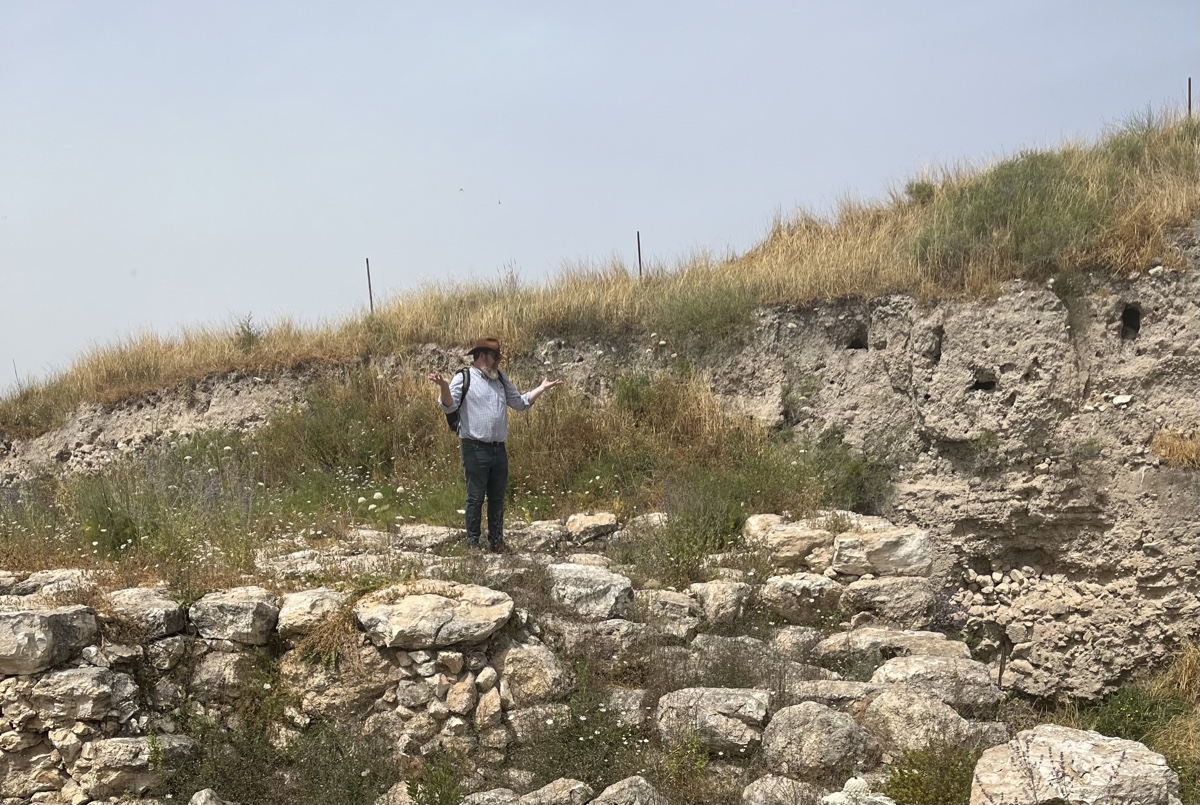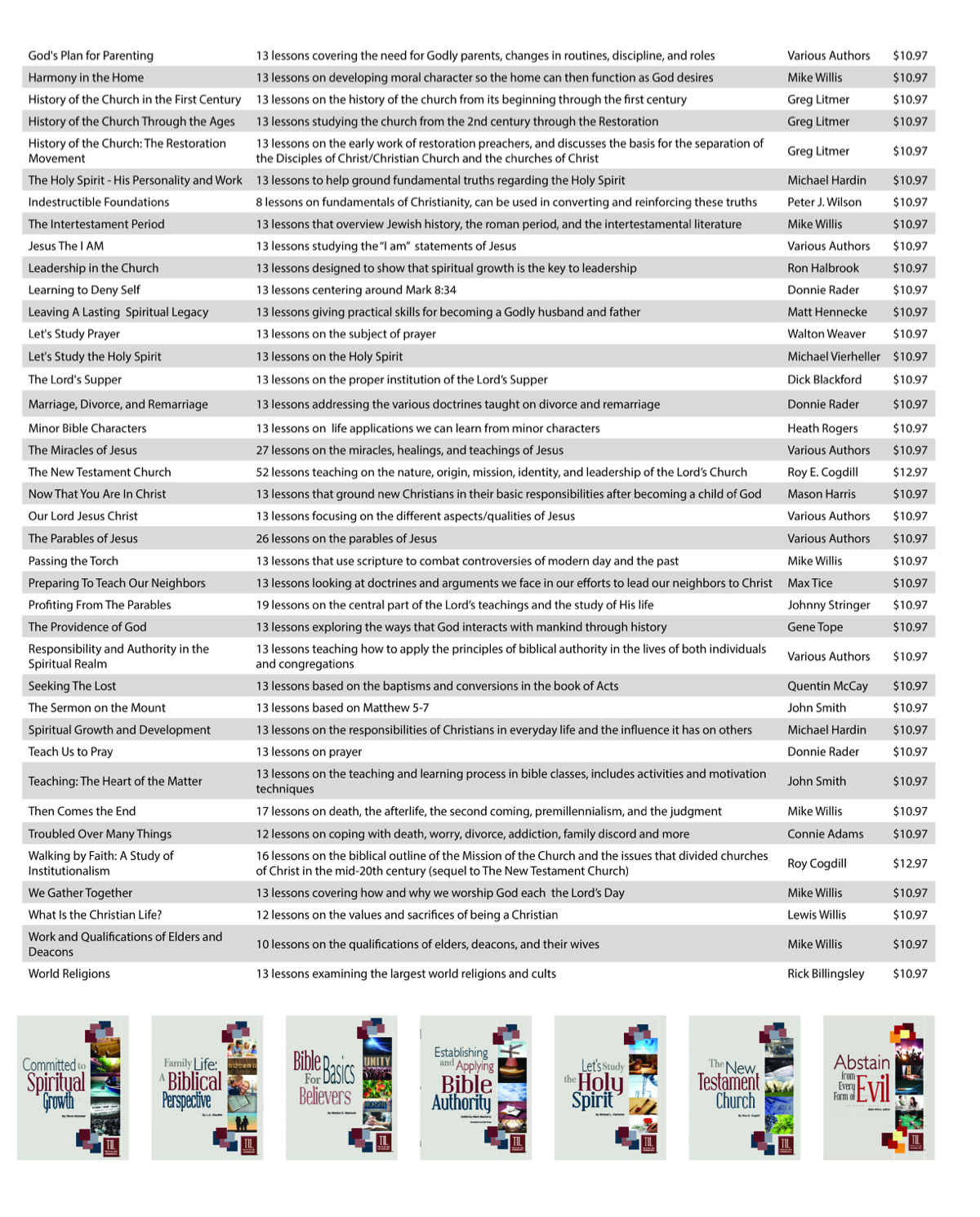By Luke Chandler
Synopsis: A massive Canaanite tower at biblical Gezer reminds Christians about the importance of living by faith. Does this archaeological parable touch your heart?
On a long, oval hill east of Tel Aviv once stood the remarkable biblical city of Gezer. (It is pronounced ’GEH-zur, similar to “to-Gether,” not ’GEE-zur, which sounds like an ungracious term for certain seniors!)
Gezer’s position allowed it to observe much of Canaan’s coastal plain to the west and control access to the mountains of Ephraim to its east. Broad, fertile fields surrounded the city. The international highway connecting Egypt to Asia passed by Gezer, providing wealth to its inhabitants.
Biblical history attests to Gezer’s importance. Joshua destroyed its army in the field during the conquest (Josh. 10:33). A few centuries later, a Pharaoh asserted himself with a military campaign that captured and destroyed Gezer, though he had to turn it over to a young and powerful king Solomon, along with his daughter. Solomon rebuilt Gezer as an administrative center, extending his government’s direct reach to the international highway (1 Kings 9:15-17). Gezer also became a Levitical city with a bloc of its inhabitants coming from the clan of Kohath (1 Chron. 6:66-67).
The ancient site of Tel Gezer was extensively excavated in the late-nineteenth century with particularly destructive results. Rather than excavate selected areas with precision, the diggers divided the entire tel into 10-meter strips, dug up each section in turn, and dumped the debris into the previously excavated strip! In other words, they used shovels to turn the entire site upside down and ten meters off. The resulted jumbling of habitation layers limited later attempts to understand more of Gezer’s past. Recently, a group of archaeologists succeeded in identifying the Egyptian destruction level and Solomon’s rebuilt city level in a spot the early excavators missed.
Fortunately, even Gezer’s brutal excavations produced stunning discoveries. The Iron Age (i.e., kingdom-era) gate has a similar design to other gates of the same period, which brings to mind Solomon’s building projects in 1 Kings 9:15. “This is the account of the forced labor that King Solomon drafted to build. . . Hazor and Megiddo and Gezer.” The similar design of Gezer’s gate to those at Hazor and Meggido suggests a central architect, indicating the growing Israelite government in Canaan.
One of the most impressive discoveries from Tel Gezer is its Middle Bronze Age gate and a massive tower alongside, which would have been in use when the Israelite spies entered Canaan (Num. 13). In verse 21, the text says they spied out the land up to Rehob, near Lebo-Hamath, which is north of Damascus. Gezer easily falls within the range of their mission, and its location by the international highway means the spies likely viewed the city’s formidable fortifications, including its massive tower.
Gezer’s Middle Bronze tower was designed to intimidate foes, and reflects the physical defenses that discouraged the Israelite spies. In their report, they noted that “the cities are fortified and very large” (Num. 13:28). Ten of the spies concluded the planned conquest of Canaan was impossible. An army of tent-dwelling Bedouins against massive fortifications like those at Gezer? Against big people and powerful fortifications, Israel believed an invasion would be disastrous despite God’s promise of victory. Except for Joshua and Caleb, the people opted for sight instead of faith.
We know the rest of the story. God collapsed the fortifications of Jericho (Josh. 6) and drew the Canaanite armies away from the fortified cities at Ai (8:10-23), Gibeon (Josh. 10:5-13), Lachish (10:33), and by the waters of Merom (11:5ff). God’s providence allowed Israel to bypass the fortifications and defeat Canaanite armies in the open. Physical walls and towers turned out to be non-factors and Israel took control of the land as God promised.
The formidable Canaanite tower at Gezer holds a lesson for modern-day Christians. Do we live by faith or by sight? (Heb. 11:1) If we have faith to seek Him and His kingdom first, He promises to provide what we need (Matt. 6:24-33). Sight can be a distraction from Satan. More importantly, God promises eternal life in a realm we cannot yet see (Heb. 12:1-2). Do we believe this? The tower at Gezer is a visible reminder that we must live by faith to receive our promised inheritance in His kingdom.

Image-1 Caption: The foundation for Gezer’s massive Middle Bronze tower is to the right of the black tarp. The original Canaanite tower was several times higher, intimidating any potential foes, including the Israelite spies.

Image-2 Caption: Luke standing on the foundation of the Middle Bronze tower at Tel Gezer. The original tower would have reached several times Luke’s height, intimidating any foes, including the Israelite spies.

